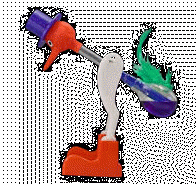|
Energy Transfers I
Task 1 - Recap
Remind the person next to you:
• Why
copper is a better conductor than glass.
• Why
evaporation has a cooling effect.
• The factors
which can affect the rate of transfer of thermal energy.
• How a
vacuum flask keeps a drink warm.
Task 2
Look at this radiator. Can you think of two (or
possibly three)
elements in its design that help it transfer thermal energy?

Can you think of a way the transfer of thermal energy
could be increased still further?
(hint: think about the colour!)

What method does this heat sink use to maximise
thermal energy transfer? How could the rate of transfer of thermal
energy be increased even further? (answer
here!)
Answer the questions above
on the sheet provided.
Task 3
Discuss with the person next to you how the cape fox
and the arctic fox are adapted to their environment.
|

Cape Fox |

Arctic Fox |
Think about:
Are the foxes trying to minimise or maximise the
energy transfer to their surroundings?
What features help them to do this?
Your teacher will ask you to share some of your ideas
with the class and show you
this presentation which helps to explain. When you are happy
you understand, write down your explanation on
this sheet.
Use the following terms in your explanations:
maximise
minimise
energy transfer
surface area
ears
large small
fat
insulation
fur
trapped air
limbs
slender
short squat
stumpy thermal
Task 4
Look at the list below. Which of these helps the human body maximise thermal
energy transfer to its surroundings and which helps it to minimise
thermal energy transfer?
How does each process work?
• Sweating
• Hairs
stand on end
• Shivering
• Reduced
blood flow to the skin |

